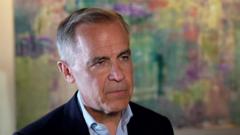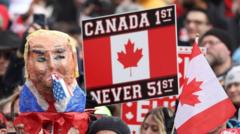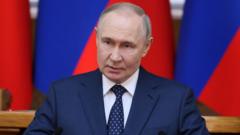On April 29, 2025, President Trump is set to sign an executive order that will offer some relief to car manufacturers struggling under the weight of heavy tariffs. The new policy will alleviate some levies affecting major automakers like Ford and General Motors, who have raised concerns that these tariffs increase production costs, lead to higher vehicle prices, and risk their financial stability. Although a 25 percent tariff on imported cars will still be enforced, carmakers will benefit from adjustments allowing them to avoid certain additional tariffs on materials like steel and aluminum.
Trump Eases Tariffs for Auto Industry Amid Economic Uncertainty

Trump Eases Tariffs for Auto Industry Amid Economic Uncertainty
In a move aimed at supporting American car manufacturers, President Trump announces a rollback on certain tariffs, despite the majority remaining intact.
Furthermore, manufacturers will be eligible for tariff exemptions on a portion of costs linked to the import of components, but this will taper off over the next two years. This latest decision appears to stem from frustrations within the auto industry, as the previous trade policies have stirred up complications and uncertainty for American companies.
General Motors has recently scrapped its optimistic profit forecasts for the year, citing the unpredictability originating from Trump's trade decisions. CFO Paul Jacobson expressed that any projections for profits have become mere speculation due to the current climate shaped by the administration's tariffs.
As the automotive sector braces for these changes, the full implications of the executive order and the Trump administration’s broader trade strategies remain to be seen.
General Motors has recently scrapped its optimistic profit forecasts for the year, citing the unpredictability originating from Trump's trade decisions. CFO Paul Jacobson expressed that any projections for profits have become mere speculation due to the current climate shaped by the administration's tariffs.
As the automotive sector braces for these changes, the full implications of the executive order and the Trump administration’s broader trade strategies remain to be seen.






















